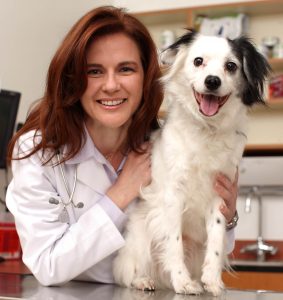544 — Rights and Responsibilities of the Stud Dog Owner
Rights and Responsibilities of the Stud Dog Owner
Dale Martenson of Touche Japanese Chin joins host Laura Reeves for a deep dive on the rights and responsibilities of the stud dog owner. The two long-time breeders break down the top five considerations for owners to consider as they decide whether and with which females to breed their male dogs.
Compensation
Stud dog owners typically will choose to either receive a stud fee or the choice of a puppy from the resulting litter in lieu of a stud fee. The amount of the stud fee, timing of when it’s paid and choice of puppy are all items up for discussion amongst the parties, Martenson noted, but whatever is decided should *always* be put in writing in a contract.
Pick and Choose
Owners of popular stud dogs will be in a position to select the ideal mates for their dog. But that requires having specific criteria, knowing the broad background of the breed, the pedigree of both dogs, the health, temperament and potential disqualifying faults and, finally, the ethics of the breeder with whom they are doing business.
Popular Sire Syndrome
Knowing what the “bottlenecks” are in a breed are part of the stud dog owner’s responsibilities. Population genetics come in to play as stud dog owners balance a desire to see beneficial aspects of their dogs used to strengthen the breed with a question of when does that become “too much” and impact the long-term health of the breed as a whole.
Preservation Breeding
Within small gene pools and truly rare breeds, owners of stud dogs will often make different decisions about allowing their dog to be used than owners of more popular breeds. For breeds with these “gene puddles,” the implications of using or not using a particular stud dog carry significantly more weight simply due to the sheer numbers or lack therof.
Relationship Building
“Establish a relationship (with the stud dog owner),” Martenson said. “Because I think right now, breeding requires more of a relationship than it did before. I think that you have to have that. You’re just not going to take a phone call and someone comes by with a brucellosis test and breed their bitch and take their check. That’s just not today’s environment.”
449 – Dr. Jerold Bell: Popular Sire Syndrome Defined
237 — DNA Genetic Testing Prevents Bottlenecks, Promotes Diversity
DNA testing can provide useful information for all breeders

Angela Hughes DVM PhD, Veterinary Genetics Research Manager, Wisdom Health
Testing our dogs’ DNA provides details on everything from ancestry in mixed breeds to disease mutations and genetic diversity in purebred dogs. Dr. Angela Hughes, Veterinary Genetics Research Manager at Wisdom Health, talks about the different types of DNA genetic testing.
“A breed is a specific combination of alleles,” Hughes said. “And 99 percent of the DNA in a Great Dane is the same as a Chihuahua. It’s that one percent that is so important.”
DNA Panel tests, Hughes said, test for genetic mutations. The Wisdom Health Optimal Selection panel tests for 180 different specific diseases that are broken out by which are identified and correlated within each breed.
Focus on genetic diversity.
“Studies show that losing genetic diversity causes loss of reproductive health, increased disease incidence, even decreased hunting ability,” Hughes said.
Purebred dog breeders are succeeding with test and replace breeding theories, Hughes believes. She referenced a study of dogs in the U.S., mixed breed and purebred, in which of all diseases tested for, 34 disorders were found only in mixed breeds, not in purebred dogs.
While Hughes acknowledges that “you can have healthy highly inbred dogs,” she notes that breeders have to be incredibly selective to achieve that.
“The average breeder doesn’t have the time and resources, the number of dogs necessary or enough information to be that highly selective,” Hughes said.
Genetic diversity in dogs will be different even in full siblings, Hughes said. For full littermates, on average, about 50 percent of the DNA is the same. This power of DNA testing, Hughes noted, is that it can help identify which of two dogs, similar in quality and pedigree, is the best match in terms of genetic diversity. Simple pedigree analysis and COI (coefficient of inbreeding) can’t provide that information.
Skip the Bottleneck
The diversity testing also helps avoid bottlenecks in a breed’s gene pool due to popular sire syndrome. She defines this as any sire with more than 100 puppies produced. In an example based on studies of Golden Retrievers in England, in a gene pool of six generations, with 31,259 individual animals represented, the testing revealed only 67 genetically unique individuals.
“DNA testing doesn’t tell you who to breed, it tells you who to breed to,” Hughes reiterated. “This is the last piece. Do all the other testing – conformation, temperament, health, function – then do this.”
Importantly, Hughes also noted that breeders should be careful to not lose the “essence of the breed” in search of genetic diversity.
“You want to move the needle,” Hughes said. “Just shift the curve in the direction of diversity.”
https://www.optimal-selection.com/
164 – Busting the Genetic Testing Myths: Dr. Jerold Bell|Pure Dog Talk
Stick around for input from Allison Foley at the Leading Edge Dog Show Academy about tips for successfully using a flat iron to groom drop-coated dogs.
And take a minute to stop by https://blog.feedspot.com/dog_podcasts/ and check out the top 15 dog podcasts! Of which we are one!



